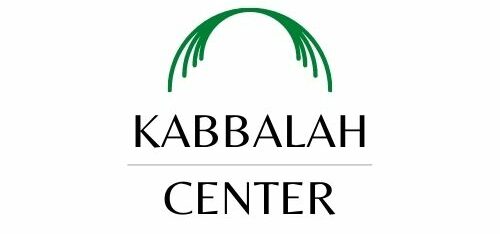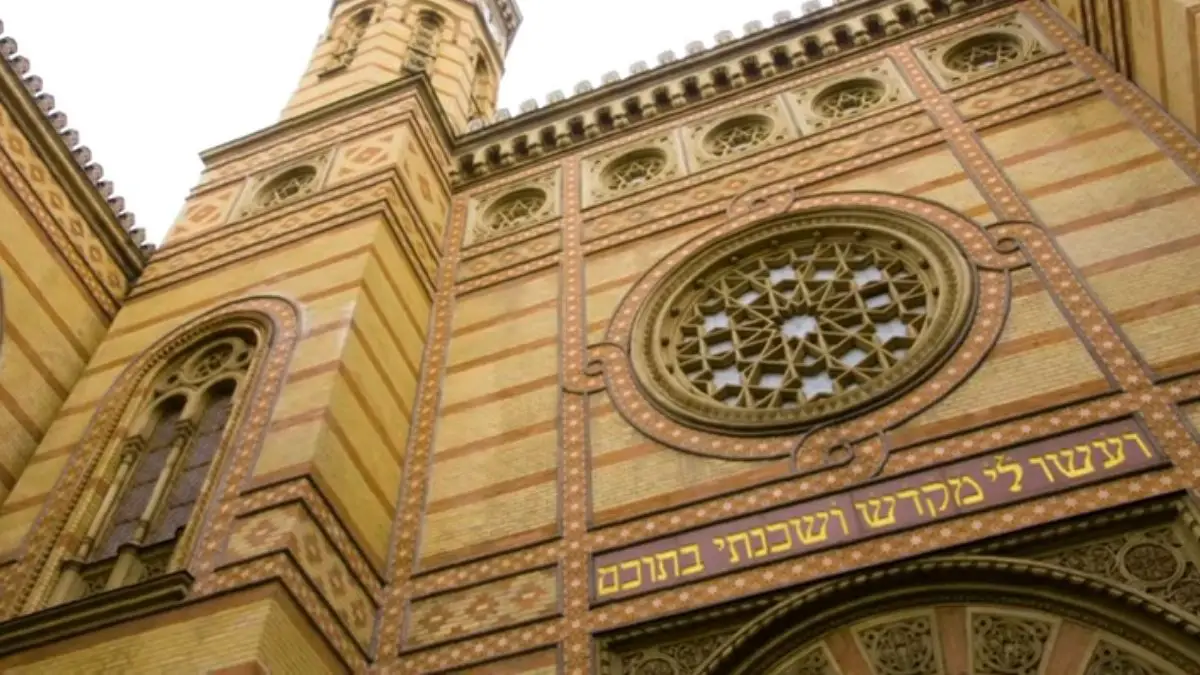The most important thing to remember about prayer in Judaism is that a Jew can pray anywhere. This is beautifully expressed in Midrash Tehillim: “When you pray, pray in the synagogue of your city; if you are unable to pray in the synagogue, pray in your field; if you are unable to pray in your field, pray in your home; if you are unable to pray in your home, pray on your couch; and if you are unable to pray on your couch, meditate in your heart.”
Origin of the Synagogue
The origin of the synagogue is not clear. There are those who believe synagogues were in place during the time of the First Temple, while others maintain that synagogues grew out of devotional services that accompanied the daily sacrifices in the Second Temple. Some also hold the opinion that the synagogue is a product of Jews in exile in Greek-influenced lands.
However, most scholars trace the beginnings of the synagogue to the Babylonian Exile in the sixth century B.C.E. By the time the Second Temple fell (70 C.E.), there seems throughout the Roman world to have been a synagogue present wherever Jews dwelt. It is estimated that as many as 480 synagogues were in existence in Jerusalem around that time.
While the Conservative movement usually uses the word “synagogue,” Reform Jews often employ the word “temple,” referring to the Temple in Jerusalem. The Ashkenazic Orthodox commonly use shul, a Yiddish word derived from the German word for “school,” since the shul is a place of learning as much as a place of prayer.
Functions of a Synagogue
A synagogue can serve several purposes. It is best known as beit ha-tefillah, a house of prayer. Since Jews are encouraged to pray in groups and certain prayers require the presence of a minyan (ten men), there must be a physical facility to accommodate the gathering.
However, synagogues have other functions as well. The synagogue acts as a beit midrash (house of study). In addition to preparation for a bar or bat mitzvah, a synagogue provides opportunities to continue the study of Judaism. A synagogue may also offer social services to the community and sponsor social events.
Contemporary synagogues vary in many ways: size, organizational structure, the extent to which they conduct nonreligious activities, and which values they reflect. However, because the synagogue remains first and foremost the house of prayer, most synagogues are similar in their physical layout.
Configuration of a Synagogue
The section of the synagogue where prayer services are held is often called the sanctuary. Many synagogues do have other elements, such as study rooms, banquet halls, or areas for children.
In Orthodox synagogues, the sanctuary is divided, with separate places for men and women. The women may occupy an upper floor, or the side or rear of the first floor, in which case they are separated by a mechitzah (wall or curtain).
Since Jews must face in the direction of Jerusalem when praying, synagogues in the United States and Europe are constructed with the front facing the East. On the eastern wall is set the Aron Kodesh (Holy Ark), in which the Torah scrolls are stored behind an inner curtain called a parokhet.
The Synagogue’s Cast of Character
Judaism accepts both public and private prayer, and there is no need for guidance or help in worshipping. However, traditional roles for synagogue functionaries have gradually evolved. To understand how synagogue services work, it will be helpful for you to learn more about these roles.
The precursors to those who officiate at the religious services are the kohanim, descendants of Aaron who were enjoined by God to perform certain sacred duties in connection with the services in the Temple. The services, described in detail in the Torah, had to do with animal sacrifices and purity ceremonies. The role of this priestly class became largely irrelevant after the Temple’s destruction.
The levites, from the tribe of Levi, were another caste of Jews with special responsibilities related to service in the Temple. However, their duties were less illustrious than those of the kohanim. Naturally, their jobs also ceased to exist after the Temple was destroyed.
With the Temple in ruins and Jews scattered all over the globe, the thing that probably held the Jews together was their knowledge of Torah. Learning became the highest priority, and rabbis (teachers) became the leaders of the community.
The Rabbi
The word “rabbi” comes to us from the Hebrew word rabi, which means “my teacher.” A rabbi is not a priest. Nor is a rabbi an intermediary between a person and God. A rabbi need not be a kohein, since his position has nothing whatsoever to do with the tasks performed by the priests in the days of the Temple. A rabbi has no more authority to discharge Jewish rituals than any other Jew. Nor is a rabbi needed to lead prayer services — anyone can do this. As a result, there is a true democratic form of worship in services.
How does one become a rabbi? The answer is much different today than it was thousands of years ago. According to tradition, Joshua became a rabbi when Moses laid his hands on Joshua’s head and “ordained” him. The Hebrew term for ordination is semicha (to lean upon). Originally, in order to become a rabbi, a man had to study with a rabbi who had been ordained through the semicha process. Once the studies were completed, the semicha procedure would be consummated with the setting of hands upon the head. Through this tradition, all rabbis had a direct link to Moses.
Today, you can become a rabbi by attending a yeshiva or seminary. After graduation, the rabbi is ordained, usually through one of the branches of Judaism. (This is why Reconstructionism did not truly become a movement until the late 1960s, when it established an institution to train its own rabbis.) However, it is still possible to become a rabbi by being ordained by another rabbi (though this is rarely performed). In Israel, it is not uncommon to be ordained by both the Chief Rabbinate and an individual rabbi. (The latter practice is called a “private” semicha. )
Although the prayer service is not required to have a leader, rabbis usually perform this role. Since most prayers are frequently chanted (sung), the obvious question becomes, “What happens if the rabbi can’t carry a tune?” After all, being learned in Torah does not necessarily correlate to knowing how to sing. Often, singing the prayers is a job designated for another person — the cantor.
The Cantor
The cantor (chazzen) leads the congregation in the chanting of prayer. Generally, though this practice can vary, the cantor sings the opening words of a prayer, the congregation joins in, and then the cantor sings the final verse. The cantor plays a pivotal role in the service because his melodies should inspire and assist the congregants in mustering kavanah for prayer.
Nothing in Judaism obligates a congregation to have a cantor, nor are there specific qualifications for the position. Typically, any person with good moral character, an ability to sing, and a knowledge of the prayers and tunes could serve as a chazzen. Unlike the rabbi, who assumes his position through scholarship and erudition, the chazzen gets his job simply through his ability to sing.
In modern times, cantors are trained professionals. They may have been ordained as clergy, or they may have earned university degrees and/or teaching certificates. Some Reform, Conservative, and Recon-structionist synagogues have opened the post of the cantor to women.
Aside from leading the congregation in the prayers, the cantor may prepare young people to chant the Haftorah (weekly Torah portion) for their bar or bat mitzvah. While the cantor’s status as religious leader and educator has become prominent in most synagogues, some smaller congregations cannot afford to hire a full- or even part-time professional. Sometimes a cantorial student is hired, but if this is not feasible, then either the rabbi or a gabbai (lay person who volunteers to fulfill duties in the religious service) assumes the responsibility.
The cantor (chazzen) leads the congregation in the chanting of prayer. Generally, though this practice can vary, the cantor sings the opening words of a prayer, the congregation joins in, and then the cantor sings the final verse. The cantor plays a pivotal role in the service because his melodies should inspire and assist the congregants in mustering kavanah for prayer.
Nothing in Judaism obligates a congregation to have a cantor, nor are there specific qualifications for the position. Typically, any person with good moral character, an ability to sing, and a knowledge of the prayers and tunes could serve as a chazzen. Unlike the rabbi, who assumes his position through scholarship and erudition, the chazzen gets his job simply through his ability to sing.
In modern times, cantors are trained professionals. They may have been ordained as clergy, or they may have earned university degrees and/or teaching certificates. Some Reform, Conservative, and Recon-structionist synagogues have opened the post of the cantor to women.
Aside from leading the congregation in the prayers, the cantor may prepare young people to chant the Haftorah (weekly Torah portion) for their bar or bat mitzvah. While the cantor’s status as religious leader and educator has become prominent in most synagogues, some smaller congregations cannot afford to hire a full- or even part-time professional. Sometimes a cantorial student is hired, but if this is not feasible, then either the rabbi or a gabbai (lay person who volunteers to fulfill duties in the religious service) assumes the responsibility.
The Jewish Liturgy
Liturgy is a form of public worship. In Judaism, the liturgy goes back to the days of the Temple. Even after the destruction of the Second Temple, group prayer was considered essential to Judaism, which is why the Jews recite most prayers in the first-person plural, “we,” and not the singular “I.” If circumstances do not permit otherwise, Judaism encourages a person to pray alone in addition to the customary blessings an individual can make throughout the day. However, in order to conduct a formal public service, a minyan is needed.
The prerequisite of a minyan is satisfied with the presence of ten adults, all thirteen years of age or older. Orthodox Judaism requires ten men, while Reform and Reconstructionist synagogues allow the number to include women. Conservative congregations vary over their respective gender policies concerning a minyan.
The word minyan is derived from the Hebrew word for “to count” or “to number.” The concept of a minyan has ancient roots. One midrash ties the custom to the time Moses dispatched twelve spies into the Promised Land, ten of whom provided a pessimistic report. In the Bible, these ten men are referred to as “an evil congregation.” Therefore, the rabbis deduced, ten people constitute a congregation.


